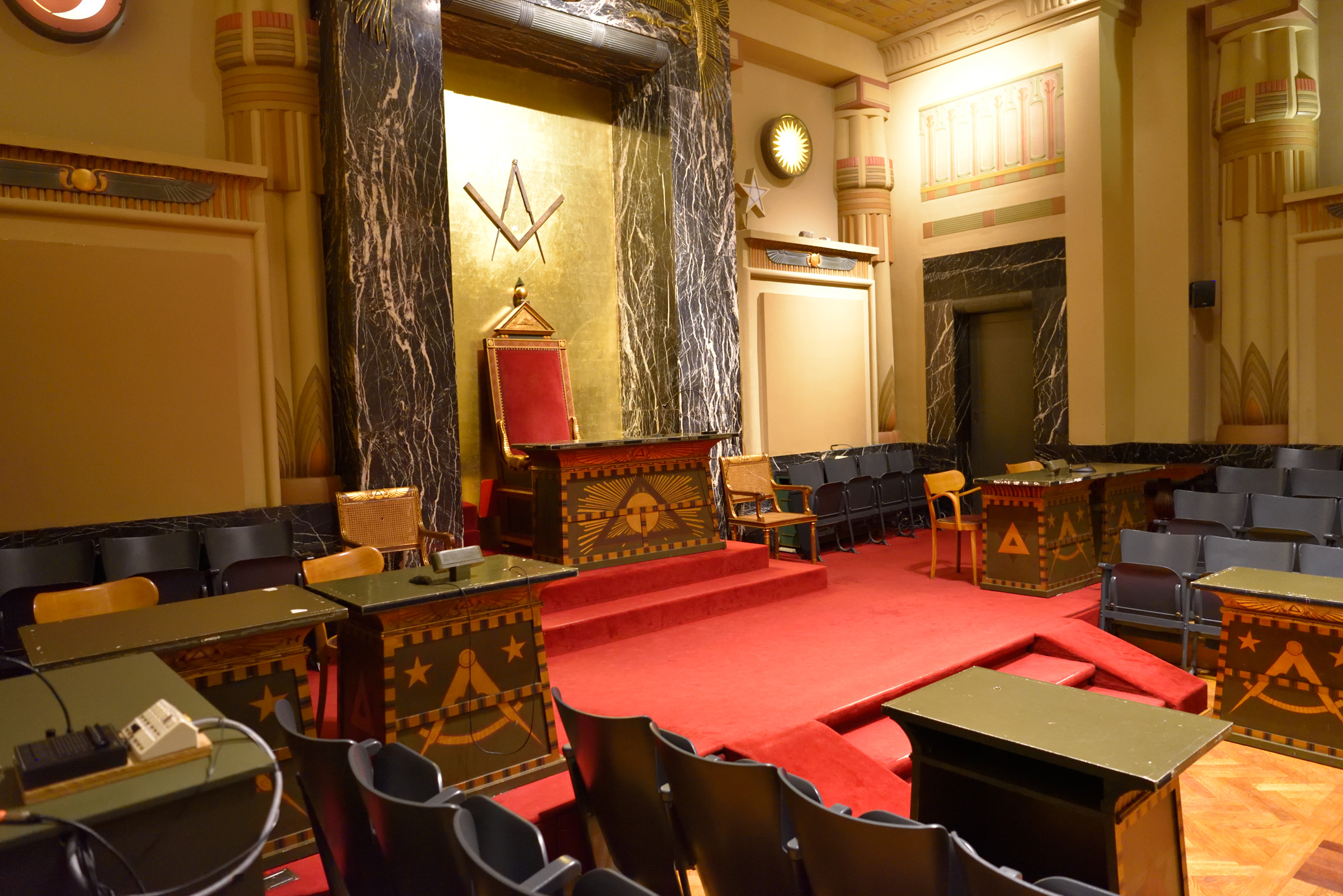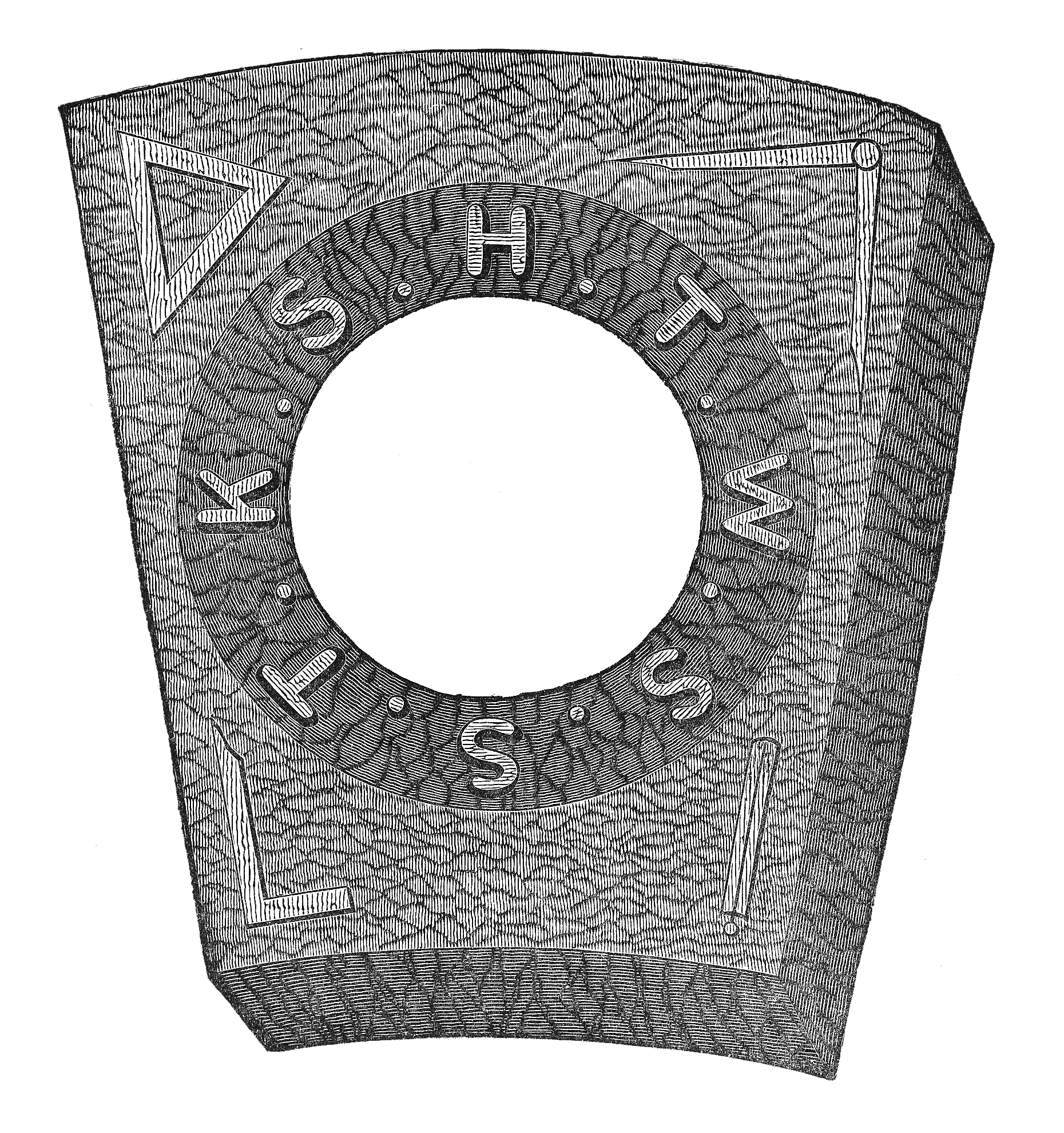|
Isaac Newton University Lodge
Isaac Newton University Lodge No 859 is a Masonic Lodge based at the University of Cambridge for matriculated members of the university. As of 2013 there were approximately 200 members. This is about half the 397 subscribing members in 1955. The lodge meets at Bateman Street Masonic Hall, with the lodge's badge or standard a combination of Isaac Newton's coat of arms and the University of Cambridge's coat of arms. The lodge is also a member of the Association of Medical, University, and Legal Lodges. History Isaac Newton University Lodge (INUL) was formally consecrated as lodge No 1161 at the Red Lion Hotel, Cambridge, on 21 May 1861, where the Duke of St Albans was installed as the first Worshipful Master of the lodge. Members of the university had previously joined Scientific Lodge, the oldest in Cambridge. In both lodges court uniform and dress is still worn at meetings by officers of the lodge. In 1961 the centenary meeting of the lodge was held at Cambridge Guildhall atte ... [...More Info...] [...Related Items...] OR: [Wikipedia] [Google] [Baidu] |
Masonic Lodge
A Masonic lodge, often termed a private lodge or constituent lodge, is the basic organisational unit of Freemasonry. It is also commonly used as a term for a building in which such a unit meets. Every new lodge must be warranted or chartered by a Grand Lodge, but is subject to its direction only in enforcing the published constitution of the jurisdiction. By exception the three surviving lodges that formed the world's first known grand lodge in London (now merged into the United Grand Lodge of England) have the unique privilege to operate as ''time immemorial'', i.e., without such warrant; only one other lodge operates without a warrant – the Grand Stewards' Lodge in London, although it is not also entitled to the "time immemorial" title. A Freemason is generally entitled to visit any lodge in any jurisdiction (i.e., under any Grand Lodge) in amity with his own. In some jurisdictions this privilege is restricted to Master Masons (that is, Freemasons who have attained the ... [...More Info...] [...Related Items...] OR: [Wikipedia] [Google] [Baidu] |
Order Of Mark Master Masons
The Order of Mark Master Masons is an appendant order of Freemasonry that exists in some Masonic jurisdictions, and confers the degrees of ''Mark Mason'' and ''Mark Master''. Purpose Similarly to Craft Freemasonry, Mark Masonry conveys moral and ethical lessons using a ritualised allegory based around the building of King Solomon's Temple. The ceremonies of Mark Masonry require the candidate to undertake the role of a Fellowcraft, thus the degree is seen as an extension of the Fellowcraft Degree, and the philosophical lessons conveyed are appropriate to that stage in a candidate's Masonic development. While the Fellowcraft degree teaches a Mason what the historical wages of a Fellowcraft Mason are, the Mark Master Mason degree teaches a Mason how to earn those wages, how to prove his work is his own, and what the penalty for fraud was during the building of the Temple. The legend reconciles the Anglo-American version of the Hiramic legend with the 3,300 Master Masons of Ander ... [...More Info...] [...Related Items...] OR: [Wikipedia] [Google] [Baidu] |
Alwin Corden Larmour
The reverend Alwin Corden "Teddie" Larmour (6 January 1886 – 1 November 1946) was a British churchman, school teacher and philatelist who edited ''The London Philatelist'' during the Second World War. Early life and family Larmour was born in Calcutta, India, on 6 January 1886 to Charles Frederick Larmour and Harriet Adelaide Larmour.1911 England, Wales & Scotland Census Transcription. findmypast.co.uk Retrieved 21 August 2015. He was educated at the University of Cambridge from where he received a Master of Arts degree.Teacher's Registration Council Registers 1914-1948 Transcription. findmypast.co.uk Retrieved 21 August 2015. He had family philatelic connections, his father was editor of the '' Philatelic Journal of India'' and a member of The Philatelic Society, London, as was his uncle, F.A. Larmour. He married Edith Margaret Kenrick in 1928. Career In 1909, Larmour became an assistant master at Wellington College, Crowthorne. Philately Larmour was a member of the Royal Phila ... [...More Info...] [...Related Items...] OR: [Wikipedia] [Google] [Baidu] |
Ron Larking
Ronald Guy Larking (9 September 1890 – 1 April 1918) was an Australian rules footballer who played with University in the Victorian Football League. Family The son of Richard James Larking (1868-1908), and Ethel Maude Larking (1863-1952), née Peterson, Ronald Guy Larking was born in East St Kilda on 9 September 1890. In 1913, he was engaged to Hetty Matthes Alkermande. He died in a motorcycle accident on 1 April 1918.Fallen Officers: Captain Ronald Guy Larking, M.C., R.E., ''The (London) Times'', No.41762, (Friday, 12 April 1918), p.4, col.E. Education He attended Melbourne Grammar School from 1901 to 1910. He was in the school's rowing First VIII and football First XVIII, On 29 October 1909, competing for Melbourne Grammar in the annual athletic sports meeting of the Public Schools' Association, he won the open mile race by more than ten yards, slowing down; he broke the previous record for the event by almost ten seconds. He held the record until 1916. He entered King ... [...More Info...] [...Related Items...] OR: [Wikipedia] [Google] [Baidu] |
Charles Edward Keyser
Charles Edward Keyser DL FSA (10 September 1847 – 23 May 1929) was a British stockbroker and authority on English church architecture. In his later life, he became Lord of the Manor of Aldermaston in the English county of Berkshire. Biography Charles Keyser was born in Paddington, London, to financier Charles Keyser (d. 1892) and Margaret Blore (daughter of Edward Blore). Keyser attended Eton College, before studying Law at Trinity College, Cambridge. He gained his B. A. in 1870 and his MA in 1873. Keyser joined Colne Valley Water, becoming the chairman. At this time, he lived at Warren House in Stanmore with his sister, Agnes. Leaving Warren House in approximately 1890, Keyser bought Merry Hill House in Bushey. While living in Hertfordshire, he captained the Hertfordshire County Cricket Club for eight years. After his studies, Keyser worked in the City of London as a stockbroker, building great wealth. In 1879, Keyser was appointed as a Fellow of the Society of Anti ... [...More Info...] [...Related Items...] OR: [Wikipedia] [Google] [Baidu] |
Charles Yorke, 5th Earl Of Hardwicke
Charles Philip Yorke, 5th Earl of Hardwicke, (23 April 1836 – 18 May 1897), styled Viscount Royston until 1873, and nicknamed Champagne Charlie for his love of the high life, was a British aristocrat, Conservative politician, dandy and bankrupt. Background Hardwicke was the eldest son of Admiral Charles Yorke, 4th Earl of Hardwicke, and the Hon. Susan, daughter of Thomas Liddell, 1st Baron Ravensworth. Elliot Yorke was his younger brother. Cambridge While studying at Trinity College, Cambridge, Hardwicke played first-class cricket on four occasions for Cambridge University Cricket Club in 1856 and 1857. He was also a Freemason, initiated into Lodge of Himalayan Brotherhood No. 459 and was appointed Provincial Grand Master of Cambridgeshire in 1872. Political career Hardwicke was returned to Parliament for Cambridgeshire in 1865 (succeeding his uncle Eliot Yorke) and served under the Earl of Derby and Benjamin Disraeli as Comptroller of the Household between 1866 and 1 ... [...More Info...] [...Related Items...] OR: [Wikipedia] [Google] [Baidu] |
John Vereker, 6th Viscount Gort
Field Marshal John Standish Surtees Prendergast Vereker, 6th Viscount Gort, (10 July 1886 – 31 March 1946) was a senior British Army officer. As a young officer during the First World War, he was decorated with the Victoria Cross for his actions during the Battle of the Canal du Nord. During the 1930s he served as Chief of the Imperial General Staff (the professional head of the British Army). He is best known for commanding the British Expeditionary Force that was sent to France in the first year of the Second World War, only to be evacuated from Dunkirk the following year. Gort later served as Governor of Gibraltar and Malta, and High Commissioner for Palestine and Transjordan. Early life and family Vereker was born in London. His mother was Eleanor, Viscountess Gort née Surtees (1857–1933; later Eleanor Benson), who was a daughter of the writer Robert Smith Surtees. Vereker's father was John Gage Prendergast Vereker, 5th Viscount Gort (1849–1902). J. S. S. ... [...More Info...] [...Related Items...] OR: [Wikipedia] [Google] [Baidu] |
Victor Cavendish
Victor Christian William Cavendish, 9th Duke of Devonshire (31 May 18686 May 1938), known as Victor Cavendish until 1908, was a British peer and politician who served as Governor General of Canada. A member of the Cavendish family, he was educated at Eton College and the University of Cambridge. After the death of his father in 1891, he entered politics, winning his father's constituency unopposed. He held that seat until he inherited his uncle's dukedom in 1908. Thereafter, he took his place in the House of Lords, while, for a period at the same time, acting as mayor of Eastbourne and Chesterfield. He held various government posts both prior to and after his rise to the peerage. In 1916 he was appointed governor general of Canada by King George V, on the recommendation of Prime Minister H. H. Asquith, to replace Prince Arthur, Duke of Connaught and Strathearn, as viceroy. He occupied that post until succeeded by Lord Byng of Vimy in 1921. The appointment was initially contro ... [...More Info...] [...Related Items...] OR: [Wikipedia] [Google] [Baidu] |
James Lindsay, 26th Earl Of Crawford
James Ludovic Lindsay, 26th Earl of Crawford and 9th Earl of Balcarres, Fellow of the Royal Society, FRS, Fellow of the Royal Astronomical Society, FRAS, Knight of the Thistle, KT (28 July 184731 January 1913) was a British astronomer, politician, ornithologist, bibliophile and philatelist. A member of the Royal Society, Crawford was elected president of the Royal Astronomical Society in 1878. He was a prominent Freemasonry, Freemason, having been initiated into Isaac Newton University Lodge at the University of Cambridge in 1866. Early life The future Earl was born at Saint-Germain-en-Laye, France on 28 July 1847, the only son of Alexander Lindsay, 25th Earl of Crawford and his wife Margaret. He was asthmatic and spent considerable periods at sea studying the more portable sections of the family library which had been established by his father.Crawford was a member of the Royal Yacht Squadron and owner of several private yachts that he used for scientific expeditions, most famo ... [...More Info...] [...Related Items...] OR: [Wikipedia] [Google] [Baidu] |
Frank Osmond Carr
Frank Osmond Carr (23 April 1858 – 29 August 1916), known as F. Osmond Carr, was an English composer who wrote the music for several Victorian burlesques before turning to the new genre of Edwardian musical comedy, and also composing some comic operas. He often worked with the lyricist Adrian Ross, and several of his pieces were created for the producer George Edwardes. Life and career Carr was born in Bradford, Yorkshire, England.F. Osmond Carr profile at the British Musical Theatre website of The Gilbert and Sullivan Archive (2004) His parents were George Saxton Carr, a schoolmaster and Margaret Durden Carr, née Painter.Lamb, Andrew. "Carr, Frank Osmond (1858–191 ... [...More Info...] [...Related Items...] OR: [Wikipedia] [Google] [Baidu] |




